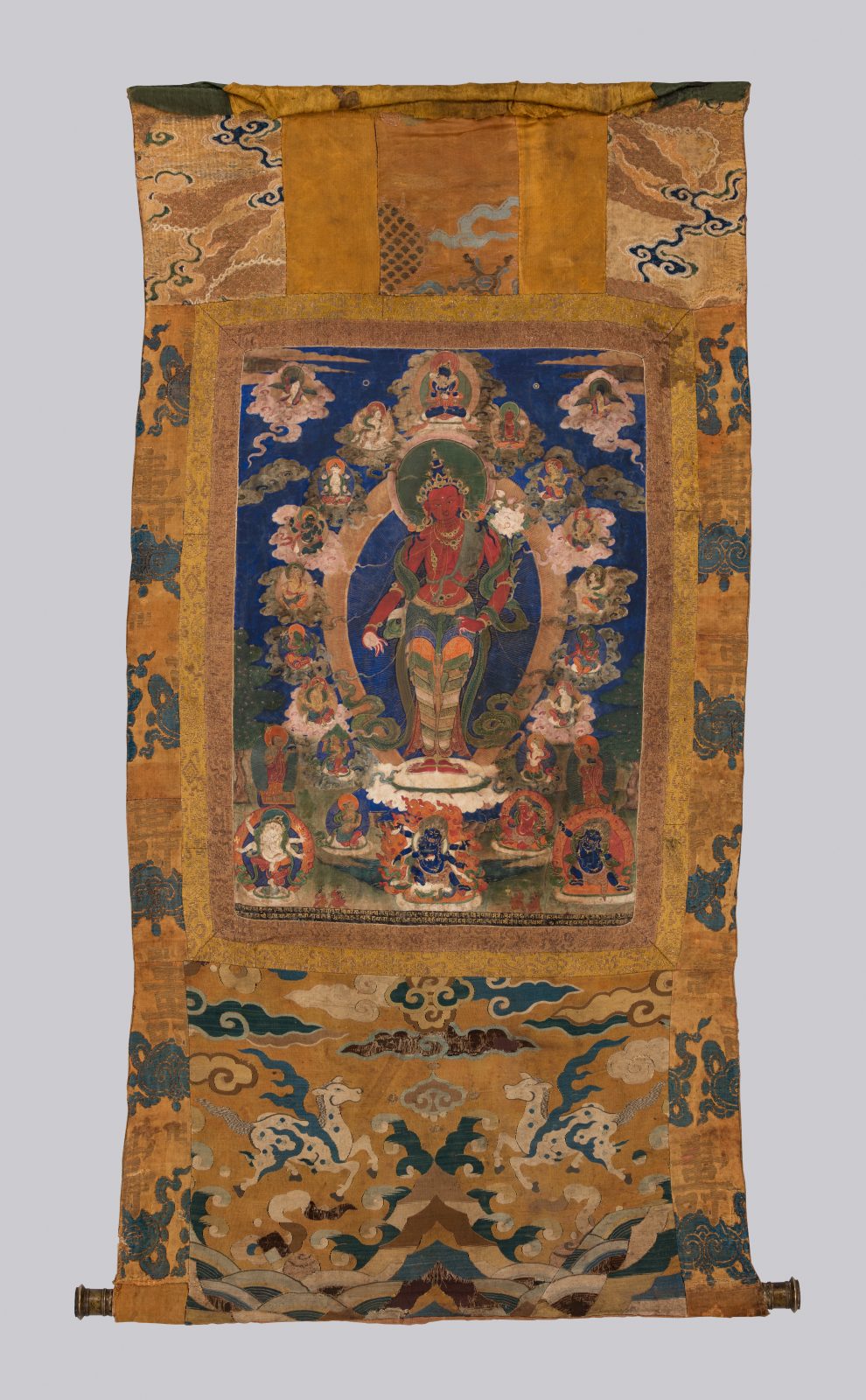

This week’s meditation session is led by Lama Tashi and the theme is Realization. The guided meditation begins at 19:51.

Red Avalokiteshvara; Nepal or Tibet; dated by inscription, 1871; Pigments on cloth; Rubin Museum of Himalayan Art; C2005.29.1
One of the most recognizable mantras in the world is om mani padme hum. It is associated with the bodhisattva Avalokiteshvara, who has countless forms, both peaceful and wrathful, red and white, and can have thousands of arms or just two.
Avalokiteshvara is a bodhisattva who has made a vow to remain in the cycle of rebirth through countless lifetimes to work for the benefit of other beings. Bodhisattvas vow not to pass into the blissful state of nirvana until all sentient beings are free of the cycle of samsara. Practitioners visualize Avalokiteshvara aspiring to make their body, speech, and mind indistinguishable from his.

Geshe Ngawang Tashi Bapu, known as Lama Tashi, is the president of the Siddhartha Foundation, Mundgod. He served as the Principal Chant Master of the Dalai Lama’s Drepung Loseling Monastery. He was an associate professor in Buddhist philosophy at the Central Institute of Himalayan Culture Studies, in India for 15 years and was the director of the Institute for six years.
Lama Tashi’s Tibetan “deep voice” is world renowned. He was the first Tibetan Buddhist monk to be nominated for a Grammy with his recording of Tibetan Master Chants.
Lama Tashi has shared his considerable knowledge at Buddhist and spiritual centers and universities throughout the US. He gives talks on compassion, wisdom, Tibetan Buddhist philosophy, yoga, meditation and culture, as well as workshops on Tibetan deep voice chanting. In addition, Lama Tashi focuses his teachings on “living a life of happiness,” a secular approach to achieving a happier life.
Get the latest news and stories from the Rubin, plus occasional information on how to support our work.